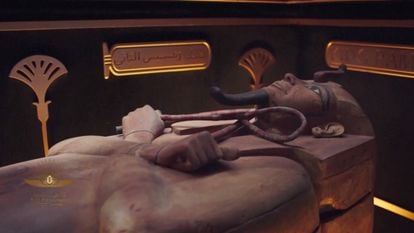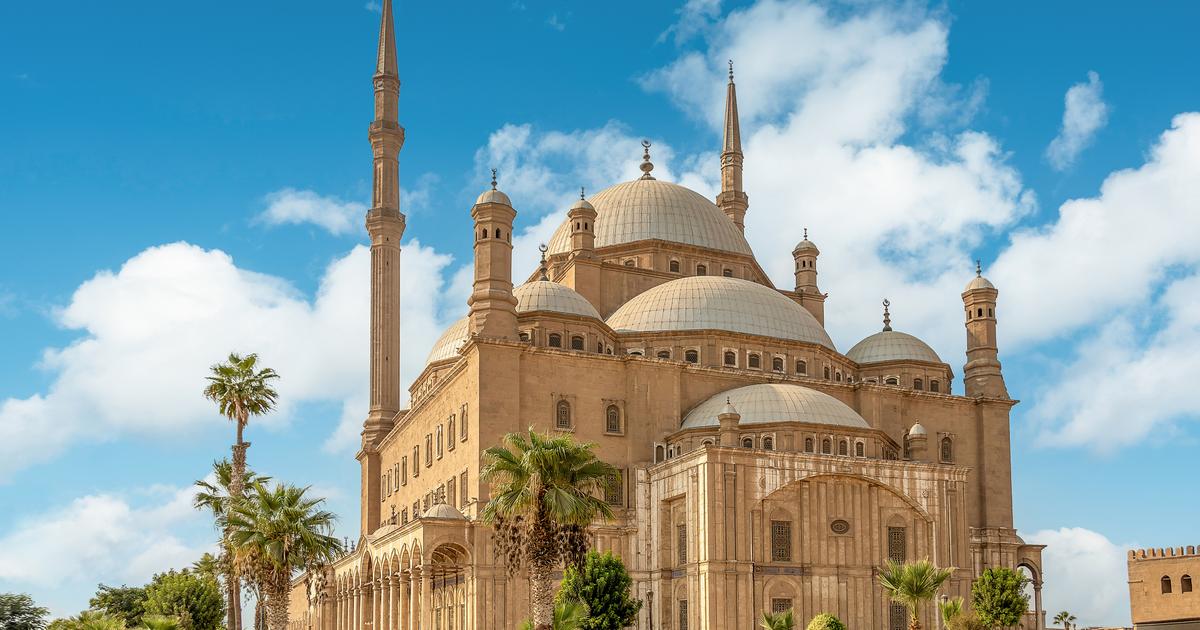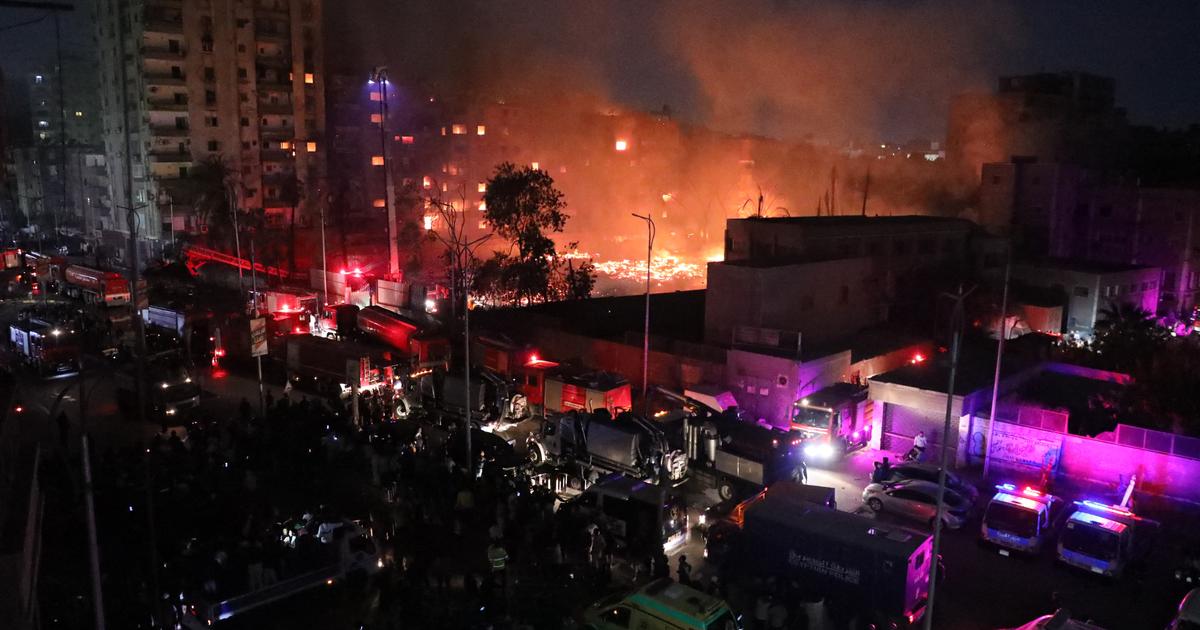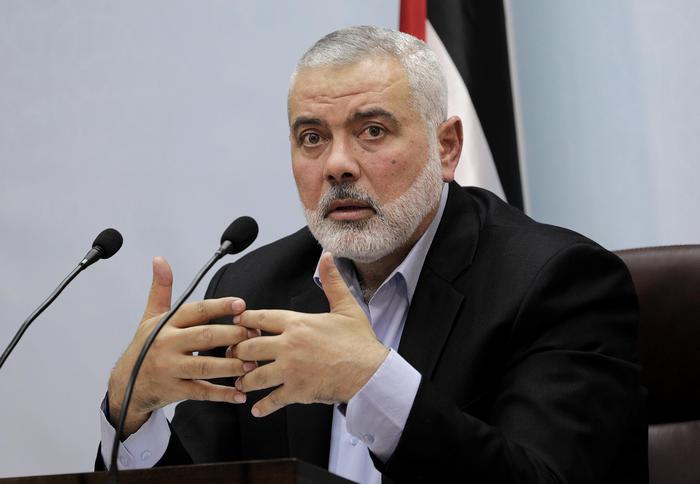Aboard extravagant vehicles and to the beat of live music performed by a great orchestra, 22 mummies of kings and queens of ancient Egypt have paraded through Cairo this Saturday afternoon, after sunset, in an unprecedented and solemn procession pharaonic.
The royal parade has started at the gates of the historic Egyptian Museum of Antiquities, in the heart of Cairo, presided over by a band of uniformed drummers, and has surrounded the iconic illuminated Tahrir Square, which for months has featured an obelisk and four sphinxes of Luxor, before heading towards the Nile. Following the course of the river, the convoy has set course towards what will be the new residence of the mummies, the National Museum of Egyptian Civilization, located in Fustat, the first capital of Egypt under Muslim rule, and today in the south of Cairo.
Millennia of vicissitudes and displacements
For the great march, dubbed the Golden Parade and which the Egyptian authorities had been announcing for months with great fanfare, nothing has been spared.
For the procession, the bodies of Egyptian royalty have been delicately placed in special nitrogen and sterilized modules to recreate the conditions of the boxes in which they are usually displayed, and loaded into exotic gold and black vehicles, and endowed with safety buffers.
Parading in chronological order, the chariots had the monarch's name engraved on the side in Arabic and in Egyptian hieroglyphics.
His pace, leisurely, was paced with the rhythm of an orchestra of 120 musicians and a choir of 100 singers.
“The script for the parade, the story, [is] the journey [of the mummies] from their tomb, in which they have remained for hundreds of years, to eternal life.
The whole parade is like a trip: we start inside the tomb, which we can imagine is the museum, and then go out towards its new life ”, explained to EL PAÍS before the parade Nader Abbassi, director of the orchestra and one of the most prestigious masters of Egypt.
A mummy during the parade through the streets of Cairo.REUTERS TV / Reuters
The protagonist mummies of the procession corresponded to 18 kings and four queens belonging to dynasties from the 17th to the 20th of ancient Egypt, a period that ranges from the 16th to the 11th century before the current era, and included 17 royal sarcophagi.
Most of them were found at the end of the 19th century in two exceptional hidden caches in the Valley of the Kings and in the complex of Deir El Bahari, where the monumental Temple of Hatshepsut stands, both located in the necropolis of Thebes, to the south Of Egipt.
Since then, and for more than a century, the mummies have lain in the Egyptian Museum in Tahrir.
The most famous of the 22 belonged to Ramses II, considered the best-known pharaoh of the New Kingdom - he ruled for 67 years - and remembered for his warrior credentials and his documented legacy, which includes iconic temples such as Abu Simbel.
Along with him has paraded Queen Hatshepsut, who led the country as regent for years and declared herself pharaoh despite the fact that a woman could not hold the title.
Thutmose III, Hatshepsut's stepson who went down in history for the military campaigns he led, and which consolidated Egypt as a superpower, has also marched.
Other mummies belonged to kings Seqenenre Taa, Thutmose II, and Seti I, and to queens Merit Amun, Ahmose Nefertari, and Tiye.
The convoy with the mummies on its way from Tahir Square to the Museum of Egyptian Civilization in Fustat.MOHAMED ABD EL GHANY / Reuters
A new museum
The procession has concluded inside the National Museum of Egyptian Civilization, where the mummies have been received with 21 cannon shots and by the country's president, Abdefatá Al Sisi.
"This majestic scene is a new proof of the greatness of this people, guardian of this unique civilization that extends into the depths of history," Al Sisi wrote in a message posted on his social networks.
The event also had the participation of prominent personalities from the world of Egyptian culture, such as the actresses Mona Zaki and Hend Sabry and the singer Mohamed Mounir.
The museum in which the mummies will now rest, in southern Cairo, has hosted limited exhibitions since 2017, but will fully open its doors with the arrival of the mummies, which coincides with the opening of its two main rooms. : the central one and the one reserved entirely for the newly landed kings and queens.
The 135,000-square-meter museum will be the only one in Egypt that will offer an overview of all the country's historical periods: from the predynastic and ancient Egyptian phases to the contemporary, spanning the Greco-Roman, Coptic and Islamic phases.
The room of the mummies will be its jewel in the crown, and it is designed to create in the visitor the sensation of being walking through the Valley of the Kings.
“What's new and unique is how they will be displayed.
The visitor is taken as if he were living an experience, entering the tombs and seeing the monuments and mummies.
Along with them, part of the belongings they used in life will be exhibited, and films will be shown with information about them, what they lived and their importance.
It will be an experience in itself ”, anticipates the museum's executive director, Ahmed Ghoneim, to EL PAÍS.
The Egyptian Ministry of Antiquities has opened several museums in recent months, mainly aimed at the local public, and the National Museum of Egyptian Civilization is one of the main that the authorities plan to open throughout 2021. The latter form part of its commitment to developing the area of historic Cairo and attracting, especially with the parade of the mummies, the attention of the world at a time when the tourism sector, key to the country, has collapsed as a result of the pandemic . The opening that generates the most expectation is that of the Great Egyptian Museum, built very close to the pyramids of Giza and called to become, once it opens its doors, the largest archaeological museum on the planet.















/cloudfront-eu-central-1.images.arcpublishing.com/prisa/IGZ7GOCXZ5GUPAQ2HWGK6Z76BU.jpg)